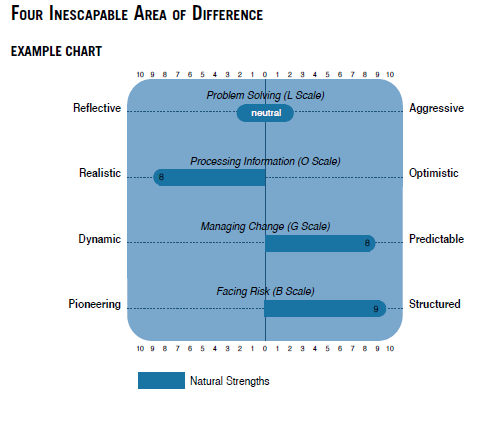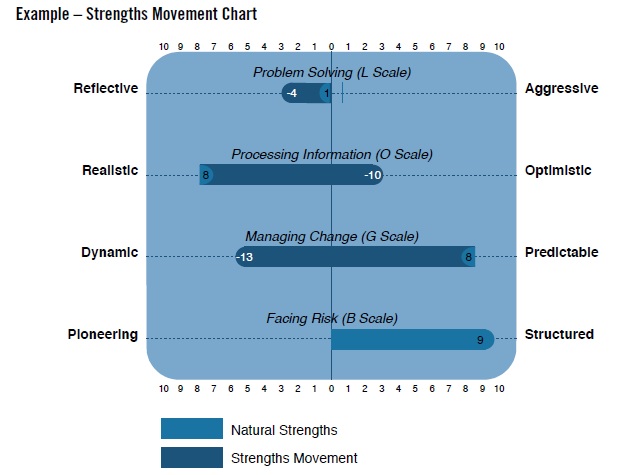Which Hand You Write With … and Why It Matters
A devotional about embracing your strengths
Right-handed or left-handed?
Just 1% of the population are equally adept at using both. The rest of us are more dexterous in one hand over the other, particularly in everyday tasks like signing our names or brushing our teeth. One hand performs faster, more easily, and more naturally than the other.
 A generation ago, it was common for parents and teachers to make left-handed children use their right hand. Today, handedness is viewed as part of an individual’s unique wiring. Children are encouraged to learn to write with the hand that feels most natural to them.
A generation ago, it was common for parents and teachers to make left-handed children use their right hand. Today, handedness is viewed as part of an individual’s unique wiring. Children are encouraged to learn to write with the hand that feels most natural to them.
Scripture reminds us that the same is true with our God-given strengths – the predictable ways each of us naturally approach or respond to problems, information, change, and risk.
The culture’s herd mindset may evaluate your strengths based on a sliding values scale, assigning worth to selected characteristics over others (just as in years past, right-handedness was elevated.) Yet the truth is that your God-given differences are simply part of what makes you unique. We can embrace the strengths that come naturally to us and use them, just as we do with a preference to write using one hand over another.
Try This To Check Your Wiring
In order to embrace the value in your differences, try this exercise. On a piece of paper, sign your first, middle, and last name, using your non-dominant hand. If you’re right-handed, put the pen in your left hand – or vice versa, if you’re left-handed.
Now, switch the pen to your dominant hand. Sign your first, middle, and last name as you normally would. If you are right-handed, use your right hand. If you’re left-handed, use your left hand.
Compare the differences you experienced as you completed those two tasks. Unless you’re truly ambidextrous, using your non-dominant hand feels awkward. The process is clumsy and cumbersome. Take a closer look at what you wrote. While your non-dominant handwriting may be legible, it bears little resemblance to your natural signature.
Pen in Hand: Embracing Your Strengths
Back in kindergarten, the choice of one hand over another was instinctive. Today, signing your name using your dominant hand feels natural. Would you sign your name with one hand when you know one is more inherent than another?
Likewise, you are uniquely wired with natural strengths.
To deny your strengths is to forfeit opportunities to use them and worse, to deny the Giver. Why not embrace your unique, God-given abilities … value the unique strengths in others … and open up a whole new place of freedom in being one-of-a-kind?
Otherwise, you may walk through life feeling like you’ve got your pen in the wrong hand.
Read more Devotionals from Ministry Insights
Devotional: Is Your Eyesight Fuzzy or Clear?
Devotional: Individuality or Conformity – Must You Choose?
Devotional: Understanding Others’ Strengths – Do You Have a Good View?
Devotional: How to Avoid “The Unimportance Trap”
Each member of your team has God-given strengths – predictable ways he naturally approaches or respond to problems, information, change, and risk.
 But each team member likely approaches the Principle of Strengths in different ways. Some are altogether unfamiliar with the concept. Others have been taught to focus on improving their weaknesses … or to accept the culture’s herd mindset that values particular strengths over others …
But each team member likely approaches the Principle of Strengths in different ways. Some are altogether unfamiliar with the concept. Others have been taught to focus on improving their weaknesses … or to accept the culture’s herd mindset that values particular strengths over others …
This exercise helps participants embrace their unique strengths in a very simple, tactile experience.
What You Need for This Exercise
For each participant:
- A piece of paper
- A pen or pencil
What To Do
- Ask each participant to select a blank sheet of paper and draw two horizontal lines across the center of the paper, about one inch apart and two inches from the sides.
- Have participants place the pen in their non-dominant hand. If they are right-handed, they can place the pen in the left hand. If they are left-handed, they can place the pen in their right hand. Have participants use their non-dominant hand to write their first, middle and last names in cursive on the first line.
- Tell participants to move the pen to their dominant hand. On the second line, they can write their first, middle and last names in cursive.
- Process the exercise together. Ask participants to share the following:
Compare the differences you experienced as you completed these two tasks.
What surprised you about doing this exercise?
What encouraged you about doing this exercise?
How does this exercise help you to understand the difference between leading from your weaknesses and leading from your strengths?
How does this exercise help you embrace your strengths?
- Guide the conversation to include these points:
Using your non-dominant hand is not natural, while using your dominant hand is natural. How does that compare with leading from your weaknesses and leading from your strengths – and how does that impact the team?
Using your non-dominant hand is messier than using your dominant hand. How does that compare with leading from your weaknesses and leading from your strengths – and how does that impact the team?
Using your non-dominant hand takes longer than using your dominant hand. How does that compare with leading from your weaknesses and leading from your strengths – and how does that impact the team?
For You To Take Away
To each is given the manifestation of the Spirit for the common good. (1 Corinthians 12:7, ESV)
More Exercises for Team Building
Differences: Do They Divide Your Team or Unite Your Team?
Team Building Exercise: My Strengths, Your Strengths, Our Strengths
For You To Think About
Each individual has been gifted with natural strengths. These qualities with which you are born are your unique way or manner of going about the tasks of daily life. Some may even refer to your strengths as your “personality.”
Adapted strengths, on the other hand, are adjustments you make in order to succeed in a particular environment. For instance, you may use one of your strengths more than another or you may even develop one of your minor strengths, bringing it to the forefront, in order to accomplish tasks in your work life, home life, or ministry life.
While you may be able to perform well using your adapted strengths, you maximize your abilities by using your natural strengths.
Consider what might happen if you and the members of your team were able to consistently use their natural strengths – rather than continually adapting – to contribute to your work, home, and ministry.
For You To Do
This exercise helps you and your team experience using both your natural strengths and your adapted strengths in succession and compare how they align.
What You Need for This Exercise
- A pen or pencil for each participant
- A piece of blank paper for each participant
What To Do
- Ask participants to sit at a table or at a place where they will be able to write.
- Give each participant a sheet of blank paper and a pen or pencil. Ask each participant to draw two horizontal lines, about an inch apart, on his piece of paper.
- Ask participants to grasp a pen or pencil in their dominant hand. Invite them to lift up that hand and hold it high in the air. Then ask them to raise the other hand high and transfer the pen or pencil from the dominant hand to the subordinate hand. Participants can lower their hands but are to keep pens and pencils grasped in their subordinate hands.
- Tell participants to place the point of the pen or pencil on the first line on the paper. Using their subordinate hand, they can write their first, middle and last names in cursive. Have participants switch the pen or pencil to the other hand – the dominant hand – and move the pen to the second line. Tell them to write their first, middle and last names on the line.
- Process the exercise together. Ask participants to share the following:How did you feel when you tried to complete the first task? What was the result?
How did it feel when you switched hands and completed the second task? What was the result? - Help participants connect the idea of writing with subordinate and dominant hands to using their natural strengths and their adapted strengths. Ask:How does this exercise illustrate the power of allowing people to lead from their natural strengths?
What can you learn about using your adapted strengths from this exercise? - How can you apply this experience to your home life, work life, or ministry life?
For You To Take Away
Having gifts that differ according to the grace given to us, let us use them. (Romans 12:6, ESV)
More Exercises to Help You Use the Profiles
Lead Your Team Through the Profile, Part 5: Checklist for Communicating
Lead Your Team Through the Profile, Part 4: What Value Do You Bring to Your Team?
Lead Your Team Through the Profile, Part 3: My Strengths, Your Strengths, Our Strengths
Lead Your Team Through the Profile, Part 2: Understand Differences
Lead Your Team Through the Profile, Part 1: Group Devotional
Part 2 of 4
If you’re a ministry leader, conflict is unavoidable. But how do you make the move from conflict to cooperation?
Remember Don (lead pastor) and Mark (executive pastor) from our previous article? Neither begins their day trying to frustrate or isolate the other. But that seems to be happening now more than ever.
One area that trips up these two leaders is managing change. Don likes things to move fast. He thrives in a dynamic environment where he can allow change to drive the planning process. Mark gravitates to a slower pace and more predictable environment where he can plan for change to ensure more predictable outcomes. Don is growing frustrated and losing confidence in Mark, even labeling him as resistant to change and blocking progress. These differences could spell the end of a multi-year relationship if something doesn’t give.
Go With Your Strengths – and Theirs
Allow me to ask you to do a simple exercise. (Take a moment to actually try it.) Reach for any object in front of you, whether it is your coffee mug, a pen, cell phone, or other object on your desk. Which hand do you use to pick the object up – your dominant hand or your non-dominant hand? If I asked you to do that same exercise a hundred times, you would reach with your dominant hand 99 times. Why? Because it’s natural. You did not take a training course to teach you to choose your dominant hand. God gave you a natural bent.
Let’s assume that you picked up a pen with your dominant hand. Then I asked you to move the pen to your non-dominant hand and write with it the rest of the day. Imagine how frustrating that would be and how much energy you’d invest making the change. Wouldn’t it be easier and more life-giving just to do what comes naturally?
In the same way, life is more productive and energizing when we use our God-given strengths, rather than to try to exercise a bent that does not come naturally to us. I have dedicated the last twenty years of my life to releasing leaders to lead from their strengths and empower others to do the same. The process is simple and transformational. And, it starts with you.
 Be Willing to Examine Yourself
Be Willing to Examine Yourself
Lamentations 3:40 says, “Let us examine our ways and test them.”
Don was willing to take a closer look at his strengths before he gave up on his relationship with Mark. He completed the Leading From Your Strengths Profile. Among other things, his personalized report revealed his passion for a fast-paced environment where change is fluid, allowing many course corrections along the way to drive change. The report gave him 22 pages of strengths-based insights and specific action steps to communicate with people around him – even those who like a slower sequential environment where change is planned with a very specific set of actions. People like Mark.
Don is starting to think there might be better choices he can make when it comes to differences.
And so can you.
DMin Candidates Grow in Self-Awareness to Lead From Their Strengths
Dr. Tate Cockrell was serving at a local church when he first became aware of the Leading From Your Strengths profile. He completed his individual assessment during a staff development retreat.
“When I saw my very own report, I was blown away by its accuracy,” says Tate. “I knew it would be a valuable tool for my counseling ministry.”
Tate became an LFYS certified practitioner a few years later. Since then, he regularly uses the profile as he counsels clients in marriage, recovery, grief, parenting, communication, and conflict resolution.
And he uses it with his seminary students. Under Tate’s guidance, the profile has become an integral part of the Doctor of Ministry program at Southeastern Baptist Theological Seminary (SEBTS).
A Core Curriculum Requirement
SEBTS Doctor of Ministry (DMin) candidates are active ministry professionals pursuing additional training in one of ten program specializations including missions, expository preaching, next-generation ministry, and women’s ministry. The program allows students to continue working full-time in ministry, combining that practical experience with mentoring and cohort support. Students travel to campus twice a year for residential seminars.
The candidates’ active ministry status is one reason the LFYS profiles are part of the program’s core curriculum. Students are able to process the data with Tate and other colleagues in their cohort.
“We require all of our DMin students to take the inventory prior to graduation,” says Tate. “I use the profiles as a tool for self-awareness, and without exception the candidates find LFYS to be extremely helpful.”
A Massive Movement to Adapt
A good example of the profile’s impact is DMin candidate David. He completed LFYS along with his colleagues in the DMin cohort. As Tate walked the students through their results, he noticed that David appeared to be shell-shocked.
Later, Tate met with David, who explained his reaction. David had been feeling unfulfilled in his current ministry role yet couldn’t understand why. He loved the community where he served, loved his congregation, and had no desire to move on.
The profile provided the answer – specifically in David’s Strengths Movement chart. The data revealed massive negative movement on two of the strength continuum scales. Negative movement indicates the user’s stress as he adapts to his environment by drawing on his less-dominant strengths.
David was still doing the same job he had always done, but as the church had grown there were considerable changes in his job responsibilities. Those changes required David to operate less in the sweet spot of his strengths and significantly more in using strengths that did not come naturally to him. David had been working hard to compensate to meet those requirements.
Tate and David talked through some ways he could staff differently. He was delighted to learn that there was another solution to his dissatisfaction other than leaving his current ministry assignment.
A Self-Awareness Tool
For Tate, LFYS is not only a cornerstone of the doctoral program at SEBTS, but also a key tool in his counseling ministry.
“One of the things that is so good about the profiles is their usability,” says Tate. “They are easy to understand.” Any user can benefit from the data without an advanced degree in psychometrics, psychology or testing, says Tate, particularly if that individual processes the information with a certified practitioner.
“So many of the problems that people bring into counseling are fueled or exacerbated because of their lack of self-awareness,” says Tate. Conflicts are often the result of differing personalities and strengths. But therein lies danger as people often attach moral value to their personalities or preferences. They begin to think that their way is “right” instead of understanding that their way is one “option.” The profiles help people to see the benefit of learning from and benefitting from others who are not like them.
“The profiles genuinely help people understand themselves better,” says Tate. “My only regret is that I didn’t start using them sooner in my counseling work and at the seminary.”
More Support for Pastors
Pastor-Turned-Administrator Helps Leaders Battle Isolation, Build Community
Presentation Files
- Leading From Your Strengths
- Position Insights
- Five Capitals Concepts
FAQ
- Tight and Neutral Graph patterns
- Tight and Neutral Graph video
- How to Read Vertical to Horizontal Graph Visual
- Strengths Movement FAQs and Video
- The Strengths Wheel FAQs and Video
- Why Am I Not Placing on the Wheel
- FAQ – How to Customize Your Communication
- FAQ – The Energy Line on the Strengths Charts
Image Files
How It Works and What It Shows
Your Leading From Your Strengths profile report (or your Marriage Insights profile report) includes two personalized charts: your Natural Strengths Chart and your Strengths Movement Chart. These charts are a visual representation of the data compiled from your questionnaire, arranged horizontally.
They reveal your strengths in four areas: problem solving, processing information, managing change, facing risk. The charts read like a continuum, with a line down the middle dividing the four areas. That line is called the Energy Line.
 These are questions users ask most often about the Energy Line on your Natural Strengths Chart and your Strengths Movement Chart.
These are questions users ask most often about the Energy Line on your Natural Strengths Chart and your Strengths Movement Chart.
FAQ #1: Why Are Four Areas Measured on the Charts?
The four areas represent four processes that comprise your daily life. Think about it: every action you take falls into one or more four categories: you solve problems, process information, manage change, and face risk.
Why measure these processes? Each of us is uniquely wired by God to handle these actions differently. “There are different kinds of gifts, but the same Spirit distributes them” (1 Corinthians 12:4, NIV).
Those contrasts can be quite intense. For instance, when it comes to solving problems, you may be bold and decisive. Your work colleague, on the other hand, might be more cautious.
Neither is a “right” approach nor “wrong” approach. They are simply different – and both are useful. Our differences are not based on a sliding scale of value. In fact, the different ways we handle our actions in the four areas are actually strengths. Paul says, “Now to each one the manifestation of the Spirit is given for the common good” (1 Corinthians 12:7, NIV).
The visual representation, on a chart, measures these four areas and allows you to understand those differences better.
FAQ #2: What Does the Energy Line Indicate?
The Energy Line in the center of the chart marks a baseline. You can see how the line passes through each of the four areas. Of the four, each has two dominant strengths, totaling eight potential strengths.
The Energy Line is a point of distinction, at which your behavior trends towards one strength or another in one of those areas. The line is a means of showing contrast. For instance, when you receive new information are you easily persuaded to believe it – or are you naturally skeptical? Your natural bent, plotted on the Processing Information continuum, shows which inclination is most natural to you. Scores on either side of the Energy Line reveals a strength, but those two strengths very different from each other.
FAQ #3: Why is Each Area Measured with a Number?
The Energy Line is the center of a continuum and marks intensity. It marks the scale on which how different people handle the four areas differently
Intensity levels are measured in the four areas on a scale of one to ten. Higher scores (those furthest from the Energy Line) indicate a more intense strength in that area. . On the continuum, adjacent scores may not appear to be perceptibly different form each other. However, the extremes on either end are quite distinct.
FAQ #4: What do scores at or near the Energy Line indicate?
Scores near the line reveal the individual’s ability to trend either way in that area, depending on circumstances. For instance, a score at or near 0 in facing risk indicates you can be precise and orderly when the situation warrants that behavior, but also fearless and unconventional when needed. Your strength can be termed as situational.
FAQ #5: How can I use this information?
As you study your scores in relation to the Energy Line, ask yourself these three questions:
- Where are my scores in the four predictable areas?
Note where your scores plot in the four areas. Then study their intensity, specifically looking at your highest two or three scores, no matter which direction they are placed related to the Energy Line (as in the Structured Predictable Realistic in the chart above.) These indicate your overall behavioral bent. - On my Strengths Movement Chart, do any of my scores cross the line?
Note any areas in which your adapted strengths scores cross the energy line into the opposite strength. This shows areas in which you may expend considerable energy to adapt, which may be reasons for feelings of frustration and stress. - Should I take any action based on what I learned?
How can you maximize your natural strengths in your work, marriage, family, and ministry? Take note of how your strengths complement those in your family and on your team. Share your conclusions with your spouse, a trusted friend, or a certified practitioner to make an action plan.
More FAQs: Frequently Asked Questions
FAQs: How to Customize Your Communication with People Who Have Other Strengths
FAQs: Report Consolidation Template – Your Profile on One Page
FAQs: Tight Patterns and Neutral Graphs
Now What? 3 Ways To Put Your Profile Data Into Practice
Fifth in a series explaining how Certified Practitioners help you process profiles
After you receive your Leading From Your Strengths profile assessment and review it with a certified practitioner, you discover your dominant strengths, particularly how you are most likely to respond in typical situations and under pressure.
This information is interesting – even intriguing. But now what?
Most of us want to know how to purposefully use our strengths in a healthy way to cultivate more productive relationships at home and at work. A certified practitioner can help you identify at least three ways to do so.
Three Ways a Practitioner Helps You Put Your Data Into Practice
1. You Can Maximize Your Natural Strengths
You have a unique combination of strengths – the ways you naturally solve problems, process information, manage change, and face risk. You view them one way. Others view them differently. A practitioner gives you exercises to help you understand how others view your strengths. This way you can know how to approach current or new situations to maximize your value to the team.
At the same time, a practitioner guides you through the process of identifying the strengths that resonate most with you. These are key factors in keeping yourself motivated – ones you want to find ways to cultivate. You’ll also discover what you need from a leader so that you can perform at your optimum level. This is important information to know as you change jobs or meet with your supervisor.
2. You Can Communicate More Effectively
When your practitioner asks you to review your report’s “Checklist for Communicating,” you will choose the statements that describe how you like others to communicate with you – and how you do not like to be communicated with.
In doing so, your practitioner affirms the value in your particular approach to communication and explains how your approach brings value to your relationships. The checklist also gives you concrete wording you can use with others to share how you want to interact with them. You can work with your practitioner to practice sharing those preferences with your team members or family members.
3. You Can Minimize Your Stress
When a practitioner studies your Strengths Chart (which reveals your natural way of handling problem solving, processing information, managing change, and facing risk) and your Strengths Movement Chart (which shows how you adapt to your current situation in those four areas), she documents the differences in scores. Specifically, she will notes movement of 5 points or more in any of the four areas and then helps you to identify the source of stress.
A side-by-side comparison of your natural strengths style and your adapted style further reveals the stress and pressure you may feel in your current environment. A practitioner helps you identify elements that contribute to this movement, such as your duties, expectations, or responsibilities. Some frustrate you. Others exhaust you. All reduce your performance in some capacity.
This is not to say you should avoid areas for improvement. On the contrary, for each of us has natural limitations or tendencies. When you know yours, you can create an action plan for managing them well and moving forward.
But a practitioner will also ask you several questions to get to the crux of the issue: which of these elements do you control and which are controlled by others? Together with your practitioner, you can identify action steps to take in the areas in which you have control – steps that allow you to use your natural strengths more effectively. You will discover you can find ways to minimize the stress inherent in adapting your strengths to a less natural environment.
Moving Forward
Paul said, “To each is given the manifestation of the Spirit for the common good” (1 Corinthians 12:7, ESV).
In other words, you can maximize your strengths for the common good, including your own. And you can minimize your stress, too, for the common good, including your own.
What a wonderful formula God has given us for moving forward and learning to lead from our strengths!
More Articles from The Practitioner Series
Ways a Certified Practitioner Can Help You, Part 1: Introduction
Ways a Certified Practitioner Can Help You, Part 2: Are You Independent or Interdependent?
Ways a Certified Practitioner Can Help You, Part 3: Four Ways You Are Unique
Ways a Certified Practitioner Can Help You, Part 4: Get the Most Out of Your Profile Data
Get the Most Out of Your Profile Data
Fourth in a series explaining how Certified Practitioners help you process profiles
After you complete a Leading From Your Strengths profile assessment, you receive a 20-page personalized profile report. Its length alone provides a considerable amount of useful information. You will gain some initial insight simply by reading the report on your own, but you will get the most out of the data when you review it with a certified practitioner.
The practitioner will take you through at least four steps to help you understand your strengths and use them in a healthy, productive way.
A Practitioner’s 4-Step Process to Helping You Understand Your Strengths
Step #1: Determine Your Dominant Strengths
The Strengths Chart, a key element of your report, presents a visual picture of the predictable ways you naturally solve problems, process information, manage change, and face risk. You have a unique combination of responses in those four situations. In the report, the four areas are presented as horizontal continuums, each with a scale of numeric strengths. The strengths have equal weight and are all equally important, no matter where they plot on the chart.
 The practitioner uses your Strengths Chart data, combined with special resources, to determine your dominant strengths. Your dominant strengths reveal how you are most likely to respond in typical situations and under pressure. The practitioner also helps provide you with descriptor words to use to describe yourself to others.
The practitioner uses your Strengths Chart data, combined with special resources, to determine your dominant strengths. Your dominant strengths reveal how you are most likely to respond in typical situations and under pressure. The practitioner also helps provide you with descriptor words to use to describe yourself to others.
In reading the report on your own, you are not likely to unpack this information.
Step #2: Identify Correlations Between Your Strengths
The Strengths Chart assigns a numeric score for each of your strengths. The number reveals the intensity with which you display that strength.
As the practitioner studies your profile data, he compares the numeric score in each of the four areas with the other three. The point spreads show strong, moderate, or weak correlations between different strengths.
Why is this information significant? Strong correlations give the most accurate descriptors of your strengths. They deserve the highest priority as you plan purposeful interactions. Moderate correlations are considered next, while weak correlations may not be accurate enough to give full consideration. Correlations show you where to invest yourself first in your activities and in your relationships.
Step #3: Pinpoint Key Emotions
As your practitioner explains your strengths in each of the four inescapable areas – and helps configure the intensity in how they correlate with each other – you will discover descriptors that portray how you respond in situations and relationships. Most users are surprised to discover the perceived accuracy of this data is at or above 90%
But it is at this point that your practitioner points you to even more helpful information, revealing how your strengths work to both demonstrate and protect your emotions. The practitioner helps you see how you naturally respond emotionally – and how you might respond emotionally when feeling threatened or pressured. This information is especially useful as you work on strategies to deal with stress or challenges in a useful, more productive way.
Step #4: Discover How You Adapt
While Strengths Chart shows your natural way of handling problem solving, processing information, managing change, and facing risk, the profile also provides a Strengths Movement Chart. This visual tool shows how you may feel you need to respond to be successful in your current environment. It is information that is extremely valuable in helping you understand how you adapt to your current situation, whether it is your job, team, group, or home life.
You can tolerate adaptation to your environment for short periods, but long-term the adaptation saps you of energy. The Strengths Movement Chart helps reveal areas where you are making accommodation.
When a practitioner studies both charts and discovers a strengths movement of 5 points or more in any of the four areas, he will help you to identify the source of stress … and then recommend purposeful interactions to allow that person to use his strengths more effectively.
Because it is impossible for two people to get the same exact results in from their Leading From Your Strengths profile, the information in the report is detailed, customized specifically for you … and extremely valuable.
A certified practitioner can help you get the most out of yours.
More Articles from The Practitioner Series
Ways a Certified Practitioner Can Help You, Part 1: Introduction
Ways a Certified Practitioner Can Help You, Part 2: Are You Independent or Interdependent?
Ways a Certified Practitioner Can Help You, Part 3: Four Ways You Are Unique




